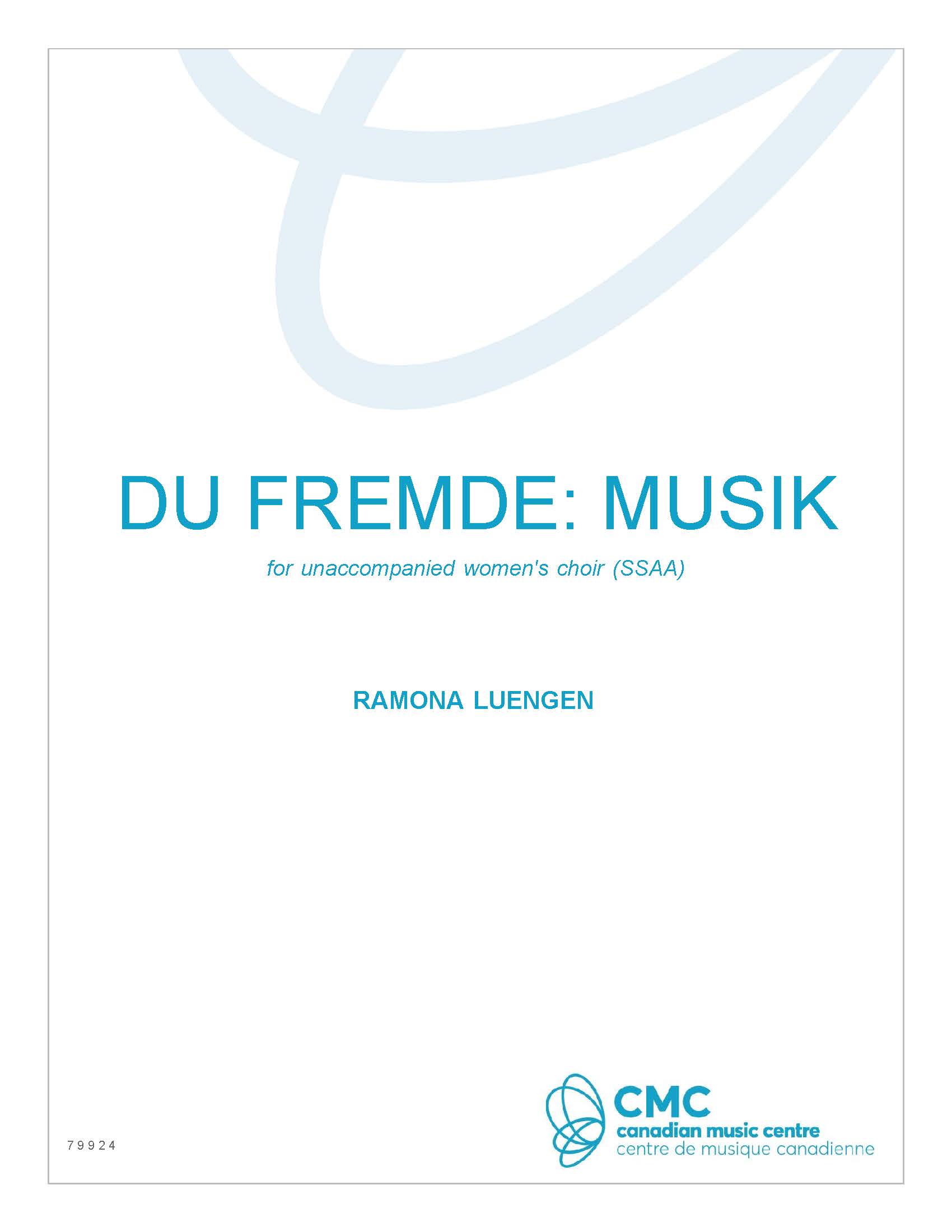Du Fremde: Musik
for unaccompanied women's choir (SSAA)
Du Fremde: Musik displays a great number of changing meters. This has been done solely to aid in the understanding of Rilke’s original syntax and to facilitate correct word stress. It is hoped that by paying close and sensitive attention to the word setting there will be a natural, logical and expressive flow to the music. In terms of notation, —–> is used to denote a slower, more gradual close to a consonant, such as n. The section beginning in measure 58 (heiliger Abschied) should be a fluid, intertwined murmuring, a reverential leave-taking strongly differentiated from the generally homophonic texture of the work. I have always been drawn to the poetry of Rainer Maria Rilke, whose intimacy and very subtle lyricism lends itself naturally to music. Most breathtaking is his highly original use and interchange of nouns of verbs, his artful translation of abstractions into geometric planes and concrete senses, and his reverential probing of existence through the depiction of everyday objects and phenomena. It is hoped that this setting of Du Fremde: Musik has captured, albeit modestly, the transcendent beauty of Rilke’s words.
I have always been drawn to the poetry of Rainer Maria Rilke whose intimacy and subtle lyricism lends itself naturally to music. Most breathtaking is his highly original use and interchange of nouns as verbs, his artful translation of abstractions into geometric, concrete planes, and his reverential probing of existence through the depiction of everyday objects and phenomena. It is hoped that this setting of his “An die Musik”, retitled in this setting as “Du Fremde: Musik”, has captured, albeit modestly, the transcendent beauty of his words.

